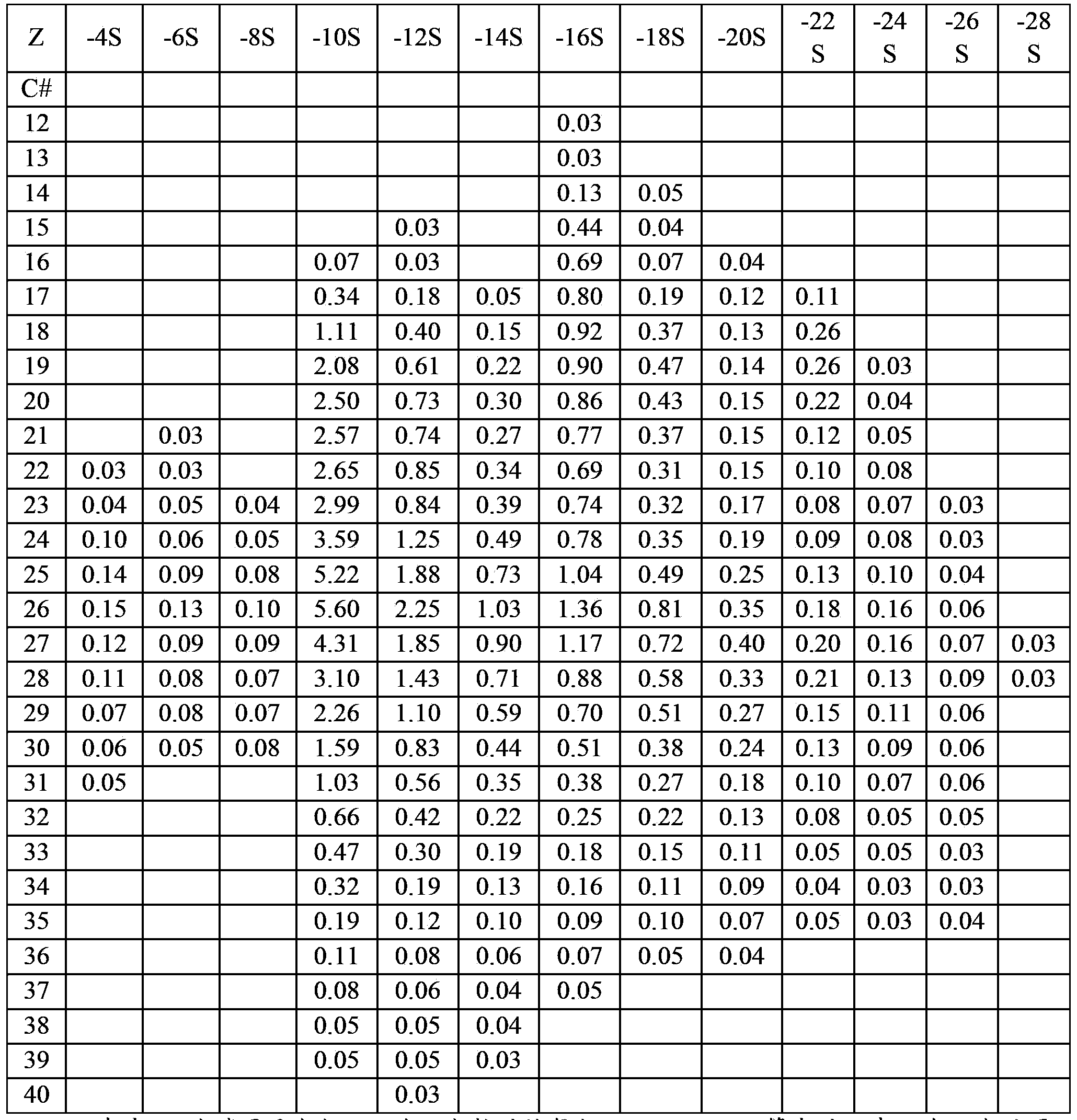Method for separating and determining aromatic hydrocarbons and sulfur-containing aromatic hydrocarbons in heavy oil aromatic hydrocarbon component
A separation method and technology for sulfur aromatic hydrocarbons, which are used in material separation, measurement devices, analysis materials, etc., can solve the problems of ineffective vaporization of gas chromatography, crossover of fractions, inaccurate quantitative results, etc., and achieve the effect of shortening separation and identification time.
- Summary
- Abstract
- Description
- Claims
- Application Information
AI Technical Summary
Problems solved by technology
Method used
Image
Examples
preparation example Construction
[0015] The preparation method of the stationary phase of the present invention is as follows: calcining alumina at 400-700° C. for 3-6 hours, and if silicon dioxide is used, calcining it at 120-300° C. for 3-6 hours in advance. Dissolve palladium chloride in water at 50-90°C, then add alumina or a mixture of alumina and silica, mix well and then impregnate for 10-30 hours, the liquid / solid ratio of impregnation is 1.5-4.0mL / g, Then dry the impregnated solid at 100-300° C. for 2-5 hours.
[0016] The invention firstly separates the heavy oil, and separates the saturated hydrocarbon, aromatic hydrocarbon and colloid components therein. The heavy oil is vacuum distillate oil, atmospheric residual oil, vacuum residual oil, deasphalted oil, catalytic cracking oil slurry or hydrotreated oil.
[0017] If the heavy oil is residual oil, according to the method of "Petrochemical Analysis Methods" (Science Press, 1990: 31) edited by Yang Cuiding et al., use n-heptane to precipitate asph...
example 1
[0042] Preparation of stationary phase: γ-alumina (produced by Sinopharm Chemical Reagent Co., Ltd.) was roasted at 500 °C for 5 hours, and 0.5 g of PdCl 2 Dissolve in 20mL of water at a temperature of 80°C, add to 9.5g of calcined γ-alumina after fully dissolving, stir evenly, let stand for immersion for 24 hours, and dry at 150°C for 3 hours to obtain the stationary phase A of the present invention , where PdCl 2 The content is 5% by mass.
[0043] The method of the invention is used to carry out solid phase extraction to separate aromatics and sulfur-containing aromatics in heavy oil.
[0044] (1) Separation of aromatic components in heavy oil
[0045] Separation of aromatics in heavy oil by alumina column chromatography. Take 3g of Saudi medium vacuum wax oil and dissolve it in 50mL of n-hexane to prepare a raw material solution, and add the raw material solution to a column chromatography filled with 100g of γ-alumina. Use normal hexane, dichloromethane and benzene / et...
example 2
[0055] Preparation of stationary phase: calcination of 6g γ-alumina at 550°C for 4 hours, 3.5g of silica at 120°C for 4 hours, 0.5g of PdCl 2 Dissolve in 20mL of water at a temperature of 80°C, add to the roasted γ-alumina and silica mixture after fully dissolving, stir evenly, let it stand for immersion for 24 hours, and dry at 300°C for 5 hours to obtain the stationary phase B. where PdCl 2 The content is 5% by mass.
[0056] (1) Separation of aromatic components in heavy oil
[0057] After deasphalting the Tahe vacuum residue oil with n-heptane, use silver nitrate modified silica gel (see CN102079987A for the preparation method) as the stationary phase to separate the aromatics in the deasphalted oil by solid phase extraction. The specific operation is as follows: take 3g of raw material The deasphalted oil was dissolved in 50mL of n-hexane to prepare a raw material solution, and the raw material solution was added to a solid-phase extraction column filled with 100g of si...
PUM
| Property | Measurement | Unit |
|---|---|---|
| specific surface area | aaaaa | aaaaa |
Abstract
Description
Claims
Application Information
 Login to View More
Login to View More - R&D
- Intellectual Property
- Life Sciences
- Materials
- Tech Scout
- Unparalleled Data Quality
- Higher Quality Content
- 60% Fewer Hallucinations
Browse by: Latest US Patents, China's latest patents, Technical Efficacy Thesaurus, Application Domain, Technology Topic, Popular Technical Reports.
© 2025 PatSnap. All rights reserved.Legal|Privacy policy|Modern Slavery Act Transparency Statement|Sitemap|About US| Contact US: help@patsnap.com


